Information file: 101
Freshwater Rays
State of knowledge
Despite their importance in scientific, economic, and public health matters, freshwater rays have not been studied in detail. Taxonomic, biological, ecological, fishing, commercial, normative, and sanitary aspects are yet to be investigated.
▲ See the species of freshwater rays in Colombia ▼
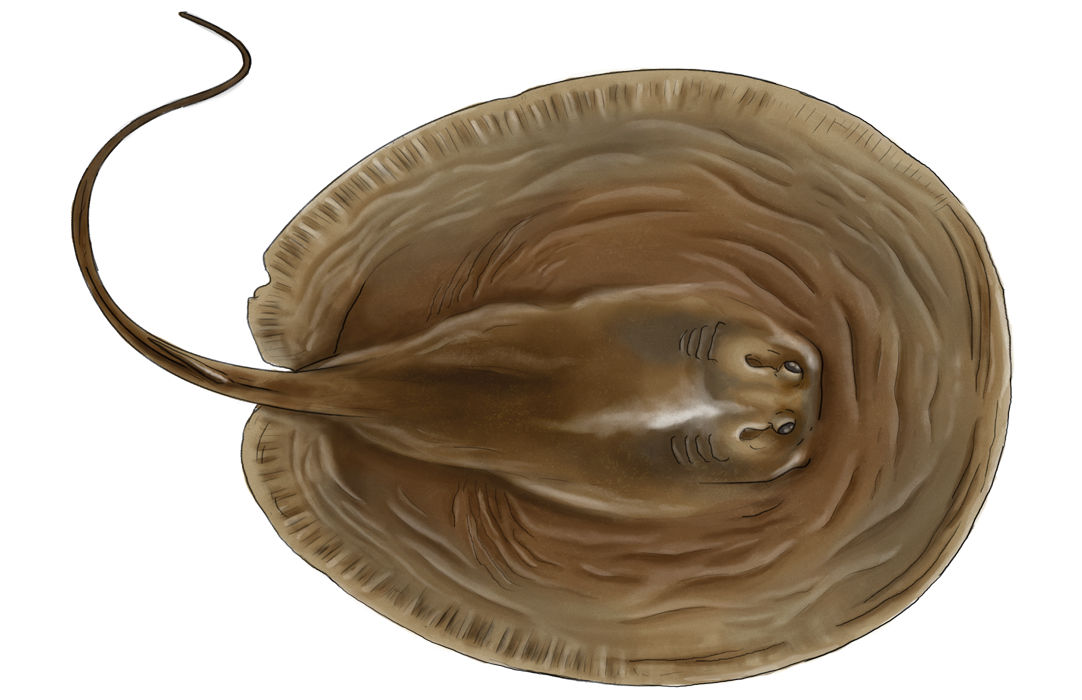
Heliotrygon gomesi
1. Gomes's Round Ray
Basin: Amazon
Use: Ornamental
Maximum size: 60 cm
Maximum weight: 6 kg
In book "Rayas de agua dulce"
▲ Next ▶
Paratrygon aiereba
2. Discus Ray
Threat category: Vulnerable
Basin: Amazon
Use: Ornamental Medicinal
Maximum size: 85 cm
Maximum weight: 42 kg
In book "Rayas de agua dulce"
◀ Previous Next▶
Paratrygon sp 1
3. Manta Ray
Basin: Orinoco
Use: Ornamental
Maximum size: 80 cm
Maximum weight: 28 kg
◀ Previous
Next ▶

Paratrygon sp 2
4. Manzana Ray
Basin: Orinoco
Use: Ornamental
Maximum size: 47 cm
Maximum weight: 5 kg
In book "Rayas de agua dulce"
◀ Previous Next ▶Despite studies being developed, all of the richness of freshwater rays in the country is not yet known. There are still species to describe in the genera Paratrygon and Potamotrygon in the basins of the Amazon and Orinoco Rivers.
◀ Previous Next ▶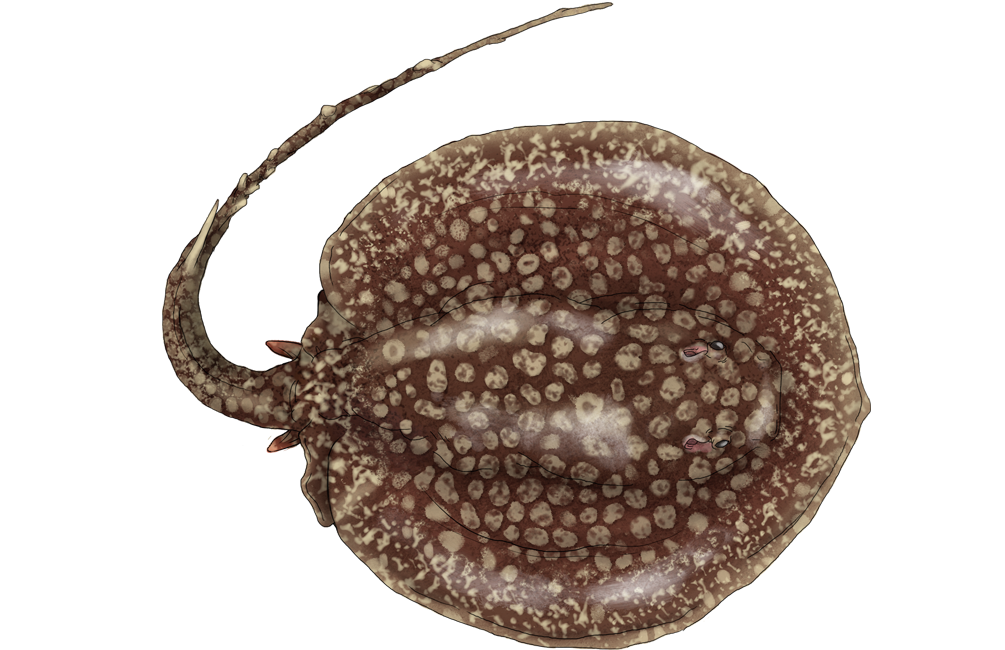
Plesiotrygon iwamae
5. Long-tailed River Stingray
Basin: Amazon
Use: Ornamental
Maximum size: 52 cm
Maximum weight: 20 kg
In book "Rayas de agua dulce"
◀ Previous Next ▶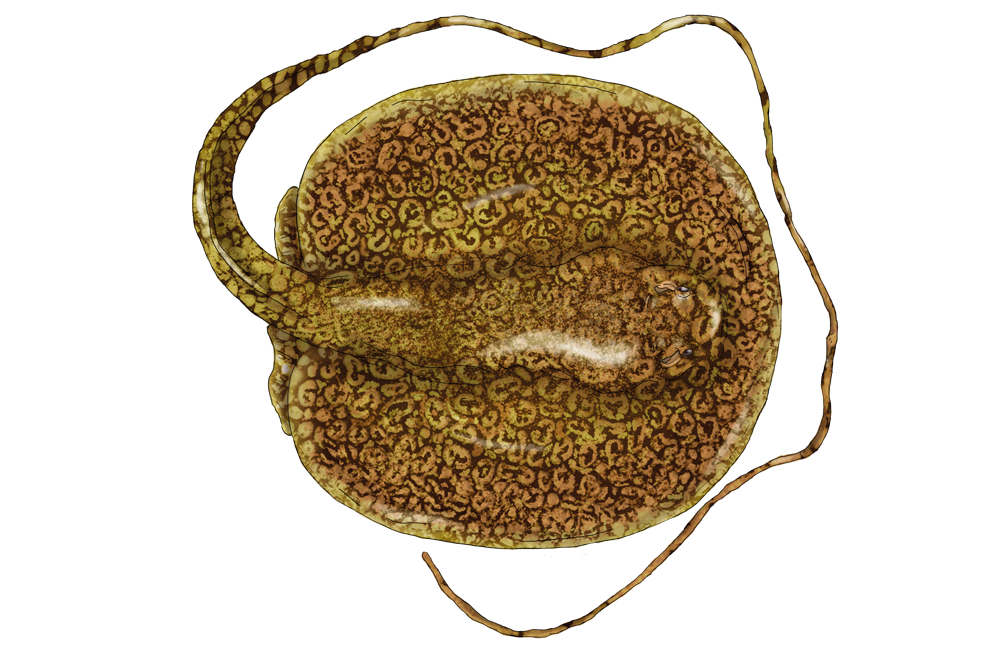
Plesiotrygon nana
6. Dwarf Antennae Ray
Basin: Amazon
Use: Ornamental
Maximum size: 52 cm
Maximum weight: 12 kg
In book "Rayas de agua dulce"
◀ Previous Next ▶
Potamotrygon constellata
7. Thorny River Stingray
Basin: Amazon
Maximum size: 55 cm
Maximum weight: 17 kg
In book "Rayas de agua dulce
◀ Previous Next ▶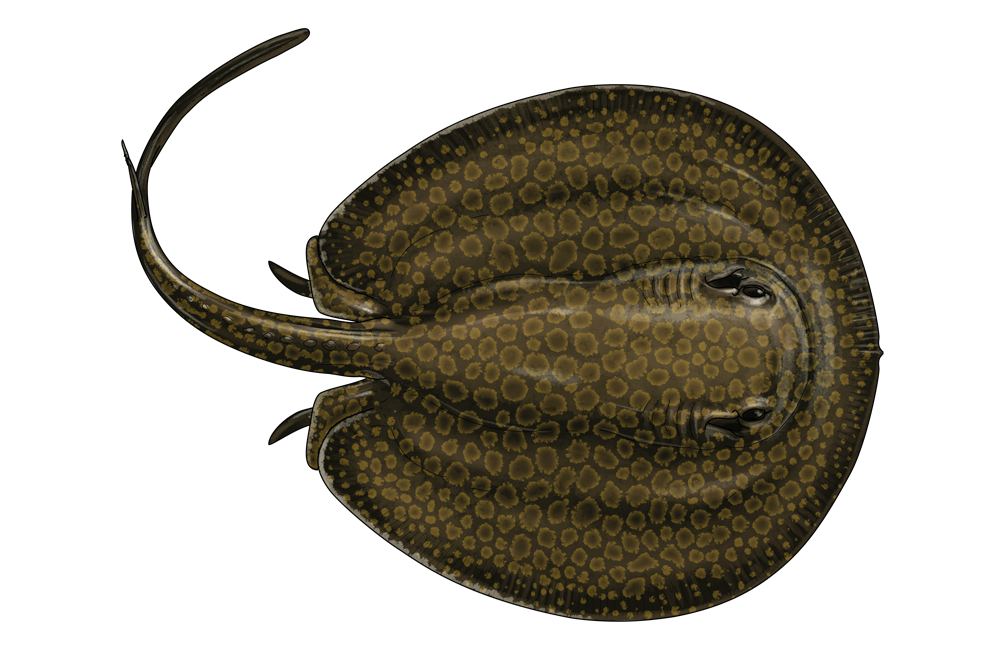
Potamotrygon magdalenae
8. Magdalena River Stingray
Basin: Magdalena-Cauca Cauca
Use: Food Ornamental Medicinal
Maximum size: 48 cm
Maximum weight: 6 kg
In book "Rayas de agua dulce"
Open in SIB Colombia
◀ Previous
Next ▶
Freshwater rays are important in terms of ecology, economy, and public health. This last aspect is related to the numerous accidents involving stings by rays. The correct identification of rays is the first step in characterizing the toxicity of different species and developing adequate clinical treatments1.
◀ Anterior Siguiente ▶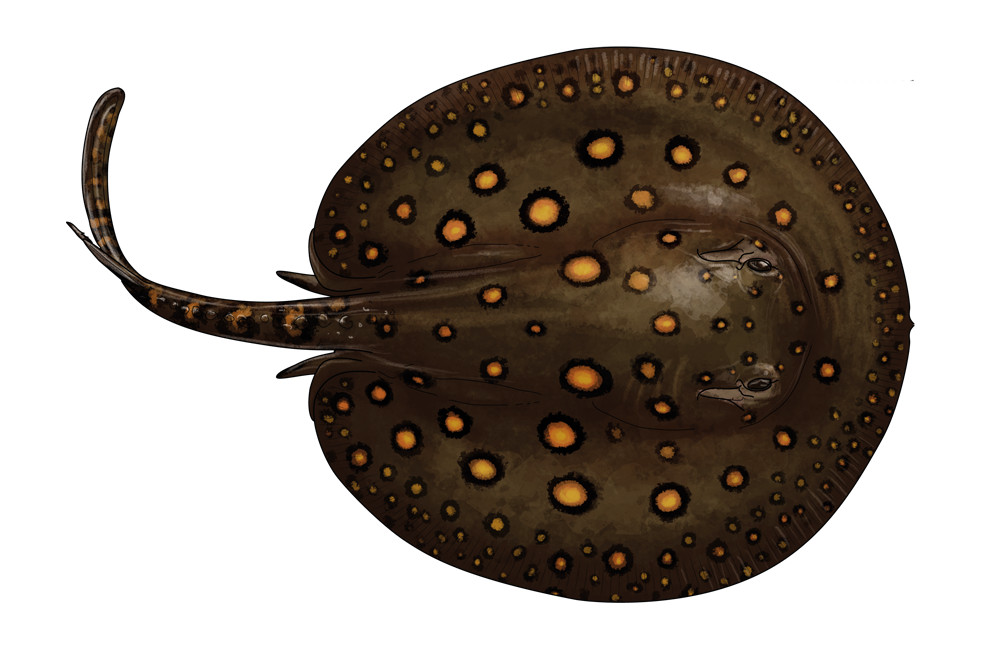
Potamotrygon motoro
9. Ocellate River Stingray
Threat category: Vulnerable
Basin: Amazon
Orinoco
Use: Food
Ornamental
Maximum size: 62 cm
Maximum weight: 11 kg
In book "Rayas de agua dulce"
Open in SIB Colombia
◀ Previous
Next ▶
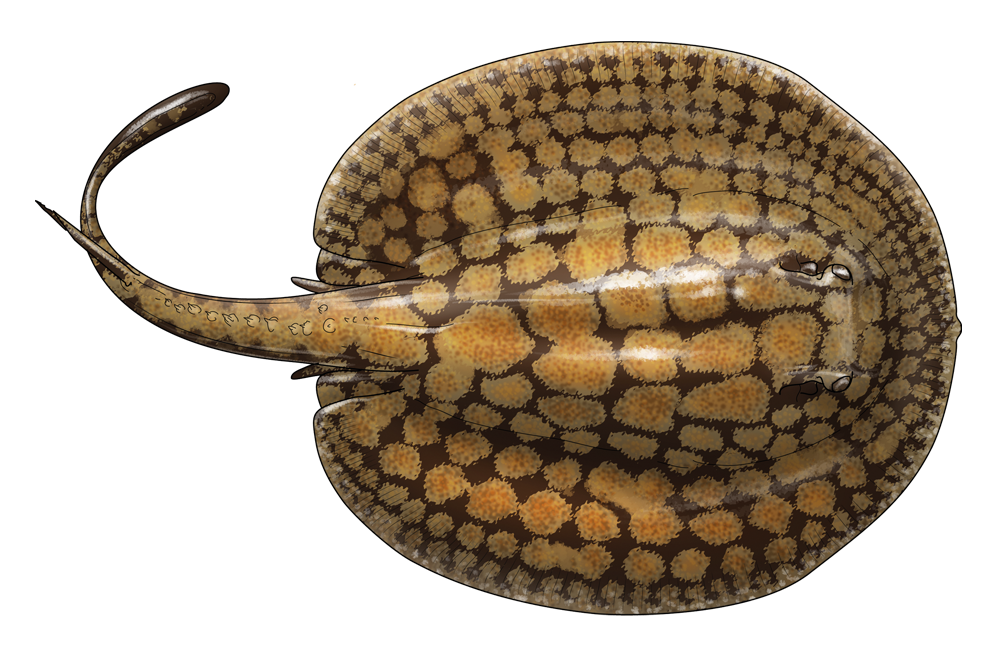
Potamotrygon orbingnyi
10. Smooth-back River Stingray
Basin: Amazon
Orinoco
Use: Ornamental
Maximum size: 64 cm
Maximum weight: 12 kg
In book "Rayas de agua dulce"
◀ Previous Next ▶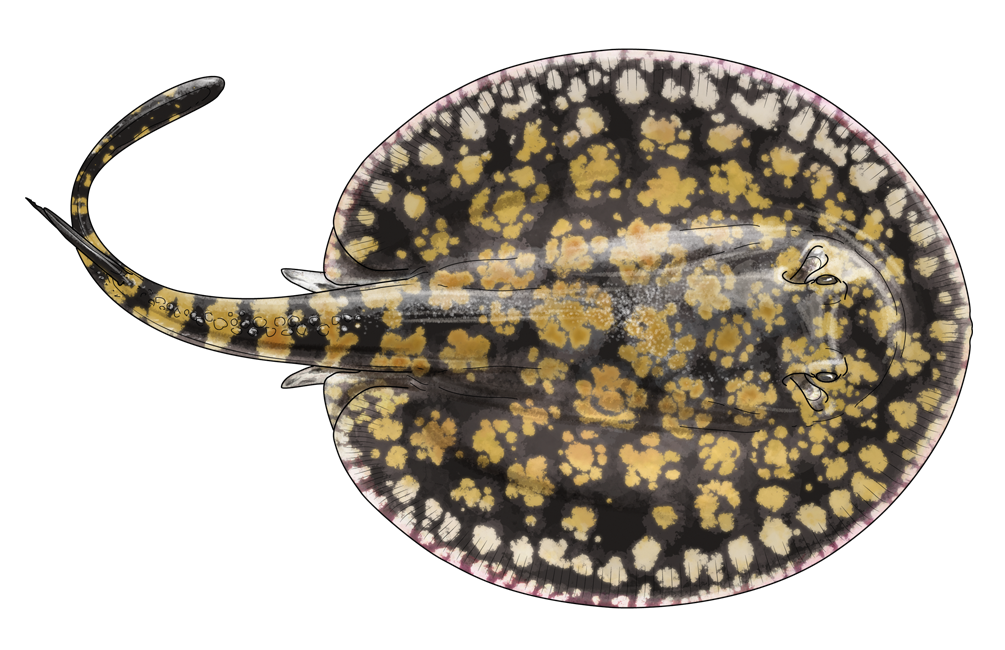
Potamotrygon schroederi
11. Rosette River Stingray
Threat category:
Vulnerable
Basin: Orinoco
Use: Ornamental
Maximum size: 58 cm
Maximum weight: 10 kg
In book "Rayas de agua dulce"
◀ Previous Next ▶
Potamotrygon scobina
12. Raspy River Stingray
Basin: Amazon
Orinoco
Maximum size: 49 cm
Maximum weight: 6 kg
In book "Rayas de agua dulce"
◀ Previous Next ▶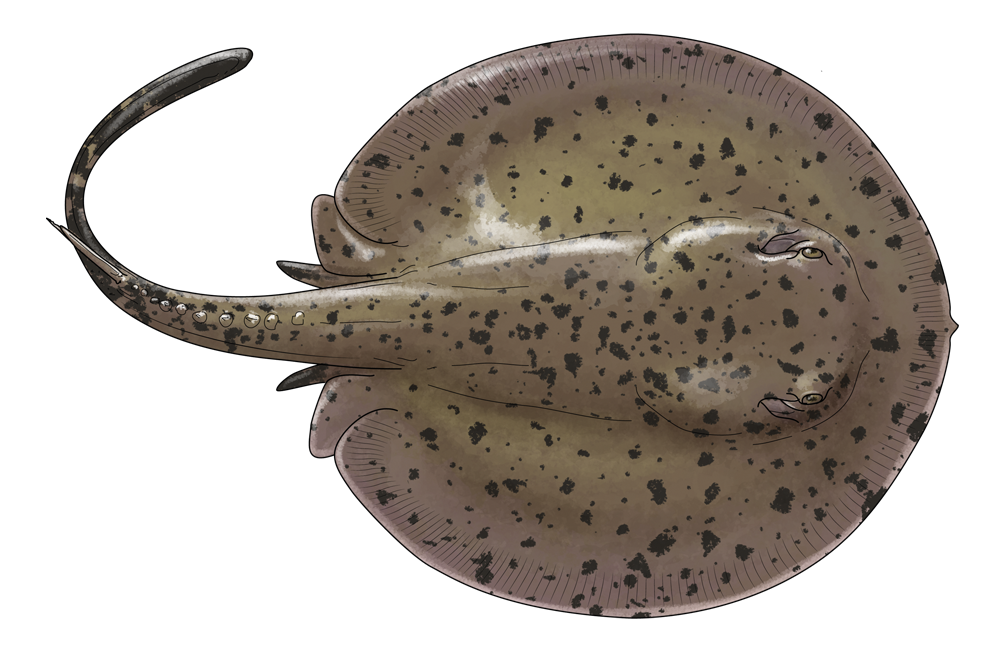
Potamotrygon yepezi
13. Maracaibo River Stingray
Threat category: Vulnerable
Basin: Cauca
Use: Food
Ornamental
Maximum size: 56 cm
Maximum weight: 5 kg
In book "Rayas de agua dulce"
◀ Previous Read text▼Freshwater rays are cartilaginous fishes that are restricted to continental water bodies in South America. They are viviparous, have low fertility rates, slow growth and late maturation. These characteristics make them very vulnerable to anthropic pressures such as bycatch, and fishing for commercial consumption, and, most importantly, ornamental use.
Freshwater rays are of great national and international interest due to their demand in the aquariums market. Colombia is one of the major exporters of rays, making this market an important source of income at the local level for indigenous and rural communities in areas of low economic development. However, the exploitation of this market has developed without appropriate technical criteria to guarantee its sustainability. In addition, information about the biology, fishing, and population dynamics of species of freshwater rays is lacking. Therefore the Humboldt Institute has been working on increasing the amount of knowledge and making population estimates for this group of animals.
In South America there are 34 different species of rays. After Brazil, Colombia is the second country with greatest species richness of rays, having 11 registered species up to date; still new species are being discovered with the advent of research. In Colombia, freshwater rays are distributed in all of the basins and slopes of the Caribbean, but are not present in the rivers of the slopes of the Pacific. There is one endemic species, the Magdalena River Stingray, which is distributed in the Magdalena-Cauca basin and the Caribbean rivers(Atrato, Sinú, Canalete and San Jorge). The basins with the largest number of rays are those of the Amazon and Orinoco Rivers1,2. Four out of the eleven species of rays in Colombia are found in the threat category of Vulnerable, being uncontrolled ornamental fishing their major threat3.
Currently, a species list and distribution data of freshwater rays exist in Colombia. Also, there is information on the biology, ecology, and fishing of some of the species and there have been advances in the methodology for developing population estimates4. Yet it is clear that more research is needed to identify and describe all species and also explore many areas.
 PDF version
PDF version Methods (in Spanish)
Methods (in Spanish) References
References Share
Share